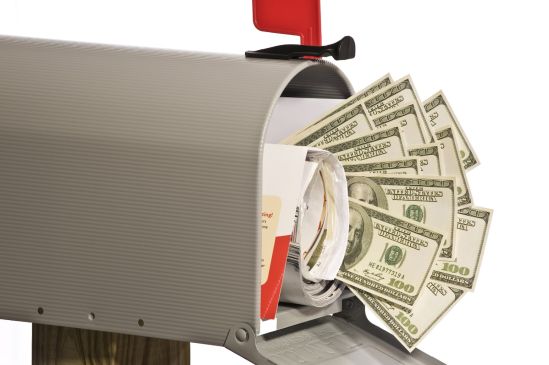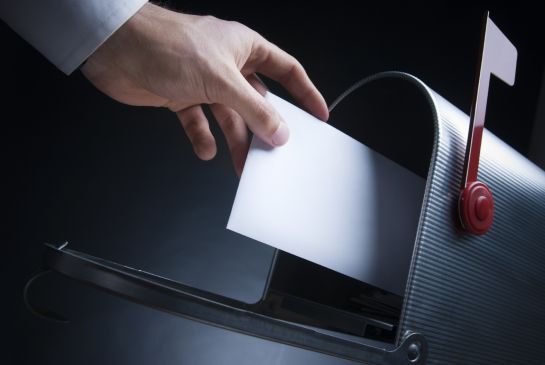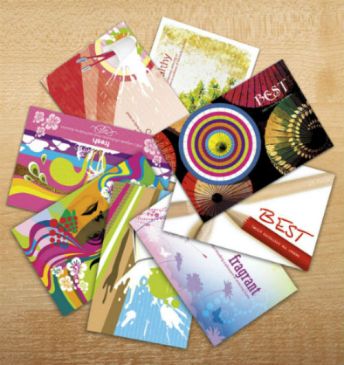

Though non-profit organizations are not selling anything or don’t need publicity for their public service, they do need some marketing to reach their prospective donors and gather funds. And the best way to market the initiatives of a non-profit organization is to send out simple yet heartwarming postcards and newsletters. Hence, this direct mail solution is the most feasible option for any kind of non-profit event. In this article we are going to discuss how to use mail for fundraising events i.e. direct mail fundraising campaigns.
Why Direct Mail Marketing?
Direct mail marketing is one of the oldest but most effective means of marketing products, services and even non-profit initiatives. Postcards, newsletters, letters, brochures, calendars, flyers; there are a number of ways a non-profit organization can convey its message to its donors. It is preferred by almost all organizations even to this day, and the reason for direct mail’s everlasting success even during the times of emails, smartphones and social media is pretty simple; it is emotional. People have a certain emotional attachment to mail as it brings back the nostalgia of this once loved routine, eagerly checking for mails in mailboxes. In addition to being emotional, mails can also be customized, targeted, personalized and are cheap when compared to other alternatives like newspaper, radio and TV adverts.
 Tips to Improvise Direct Mail Fundraising Campaigns
Tips to Improvise Direct Mail Fundraising Campaigns
If your organization is hosting a fundraising event and if you are planning to send an invite to all your prospective donors via direct mail, follow the below mentioned tips to make it a successful direct mail fundraising campaign.
1. Preparing your Mailing List- Before you decide on aspects such as content, design, budget and postage, make sure you have a refined list of all the donors you want to reach out to. Based on their previous contributions and promises, prepare a refined mailing list that only includes those donors who are likely to donate this time. This increases your conversion rates, adds value to your fundraising event and also reduces the number of redundant mails and costs incurred.
2. Type of Direct Mail- As mentioned above, there are a number of ways you can convey your message using mail- postcards, newsletters, letters, brochures, flyers etc. In order to have a successful direct mail fundraising campaign, choose the type that will stand out in your donor’s mailbox. Your campaign’s primary objective must be to grab your donor’s attention and not end up as junk mail in trash. Attractive postcards and newsletters without envelopes are normally the ideal choice for fundraisers.
3. Outline and Design- With a bunch of other mail, your postcard or newsletter has to stand out and grab the reader’s attention in a few seconds. Outline of the entire mail piece, content distribution, its design, choice of colors, fonts- every little detail plays a major role in influencing your prospective donors. So in order to make your direct mail fundraising (https://en.wikipedia.org/wiki/Direct_mail_fundraising) successful, attention to detail and design is a must. Also ensure the paper quality is good enough to make the invite presentable and dignified.
4. Content- Though looks play a major role in grabbing attention, it is the content inside that makes all the difference once your mail gets picked up. Donors expect a lot of information such as the cause supported by the fundraiser, annual reports of the organization etc. Make sure to furnish every little information that’s worth mentioning and use bold fonts for headlines and other outliners.
5. Acknowledgement- Once the donors seem interested in the fundraiser and officially confirm their participation, it is a courteous gesture to send them a thank you card and acknowledge their contribution. Keep them well informed about the event and also mention how this contribution will further strengthen the relationship between the donor and the organization.
6. Contact Information- Lastly, to keep your direct mail fundraising campaign effective and successful, furnish the mail piece with all the relevant details, contact number & address and links to social media pages. Hand addressed mails are very popular in the non-profit organizations as they add value to the mail piece and make it look more personal.

Copy for great fundraising letters is challenging than most other copy writing tasks for marketing objectives. But often such crucial copywriting tasks are executed by next desk executives rather than expert copywriters. That is the constraint for small businesses as they cannot spend huge on copywriting. But effective copywriting is not all. You have to segment your mailing list prior to preparing copy. Actually, you need to address different segment in a different way. Such an approach will definitely enjoy the higher attention and chances of meeting the goal. Here are some key tips for effective direct mail fundraising.
1. Make use of distinction and segmentation in preparing separate mails
Writing and sending one fundraising letter (http://nonprofit.about.com/od/fundraising/tp/fundletters.htm)

to all without any distinction of the recipient is very unlikely to bring any result. There are too many distinctions to make and at a more granular level you can make such distinction more you have your chances to achieve your fundraising goal from different segment of people. The first distinction that nobody can overlook is between individual and business and foundations. Secondly, you can make a big distinction between people having donation track record and people being addressed for the first time. Now you can go segmenting at the granular level, such as monthly donor, yearly donor, active donor, frequent donor, major donors, minor donors, etc. You have to prepare separate mail with a separate copy for each segment of recipient or potential donors.
2. Focus on the donor’s benefits rather than your needs
Set the tone of the address that touches the recipient personally, but all the time makes sure your copy gives him most focus. You have to explain the benefits of making such donation in explicit terms rather than limiting yourself with your needs.
3. Ask for money in clear and explicit terms
Never ask in vague terms such as ‘support’ which is a relative term and does not mean fund in all cases. So when asking for fund, clearly mention the amount in numeric number.
4. Write simple, straightforward and meaningful copy
Finally, it is your convincing copy that would do all the jobs. Write in simple and straightforward English without giving vent to unclear literary terms using custom postcard. Donors are less likely to read a letter down to the last line if it goes on beating around the bush.
5. Make sure the letter content is optimized for readability
Optimize your copy with small paragraphs, heads and sub headings, bullet points and underlines in places. The reader can easily make out the main points with a look over the main points and often that inspires them to read the rest of the letter.
6. Make sure the letter is accompanied by a package
A single lone letter without any accompanying literature, envelope and replying envelope often is viewed with contempt and they find their place among the trash. Moreover, a letter accompanied by a reply envelope pushes the recipient to engage and undertake the action of replying.
7. The length should directly correspond to your purpose
Few recipients would have time to go through a long letter that unnecessarily takes too many words. Most donors just have a quick look through rather than reading the whole letter. So, make the letter as long as it takes to make the point.
8. Avoid telling too much about your organization
Instead of spending too many words on your organization inside the letter it is recommended to offer a detailed document with the letter corresponding to the vision, values and credentials of your organization. Most donors do not bother to remember organization details and so avoid offering them such details inside the letter. A short, crisp and to the point mention of the organization and fundraising objective is enough. For details, refer the accompanying document.

Eye catchy postcards which offer inexpensive and effective marketing avenues for businesses always need good design. A good postcard design will help your business stand out in crowd and enhance the chances of readability for your message. Colorful, eye catchy and effectively written with simple short and sweet words make great postcards. Good design is not alone that takes all the credit for making a mark, good printing is equally important.
A business postcard must impel a positive reaction from the recipient. Ask yourself whether your postcard after getting printed with desired effect convey the right visual message. Secondly, ask yourself whether the custom postcard printing  and design looks too common in comparison to too many other postcards sent by marketers. While the answer of the first question should be positive, the second one must be answered negatively if you are on right track. Here below we provide some helpful tips.
and design looks too common in comparison to too many other postcards sent by marketers. While the answer of the first question should be positive, the second one must be answered negatively if you are on right track. Here below we provide some helpful tips.
Maneuvering visual elements
Images and color should emphasis the purpose and have positive effect on the recipient. Taking an image from the web may not sufficient always. Sometimes you may need to spruce up the image a little bit with patches of artwork or graphic design. Graphic design alone can serve the purpose pretty well sometimes.
• The color should relate your brand to a certain extent. Make sure the design is consistent enough with your website, store and branding avenues.
• When using images from stock image sites make sure that you find the best contextual and uncommon image with effective potential.
• Make sure the postcard carries a custom business logo among other visual elements.
Optimizing readability of postcard content
Keeping it bright, brief, to the point with sweet use of catchy words and sentences make a great postcard using variable printing services. Readability should be optimized by design and maneuvering text font complementing that design element. Here below the key tips.
• Avoid visual clutter with too much text on the postcard.
• Use negative space or white space around content to enhance readability and attract attention.
• Your postcard should not inform everything on the spot. Rather it should only play as the teaser to motivate the recipient to contact you further.
• Avoid putting dense content as no one bothers these days to read so much on a marketing literature.
• Using highlighted words like “Free” or “50% Off” or “Free Gifts” to catch attention.
• Do not use too many different font sizes. Restrict yourself to one or two.
Go big while printing postcards
Finally, it is the size of the postcard that matters as well. Yes smaller postcard deserves more attentiveness from the recipient which is really hard to get. On the other hand, offering unusually bigger size of postcard (http://en.wikipedia.org/wiki/Postcard) you are bound to be watched and cannot be ignored. Moreover, even when the postcard draws no attention from the recipient, it can even be read from a distance. Thus bigger postcard always makes sense and is more apt to deliver leads for you.
Quality paper with appropriate texture
It is the quality of the paper that helps the design to stand out. So choosing cheap quality paper you are actually wasting the design output. Appropriate texture befitting to your desired look and feel is also crucial to make an effect. For quality full blown images using glossy paper can be effective. But for postcards with mainly text messages matte finish can be appropriate. You can also use two different texture and paper quality on both sides.
